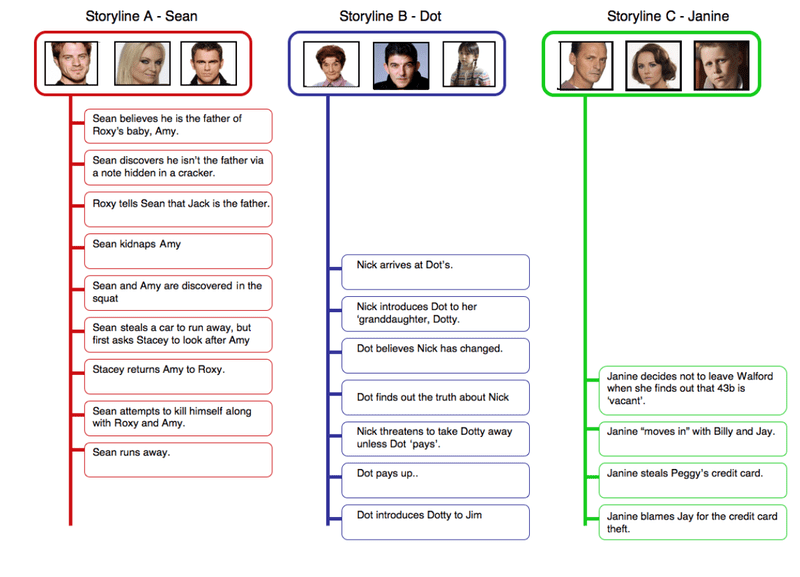Where do you hide the good stuff?
As I first walk through the doors of a charity, I often find myself having an Indiana Jones type moment.
It's nothing to do with dodging boulders or poison darts. What comes to mind is the closing scene from Raiders of the Lost Ark – the one where the ark is in a packing case being wheeled in to a huge warehouse packed full of thousands of equally non-descript boxes.
I hope that hidden in a draw, filing cabinet, on a computer or even in someone's head is going to be a game changing piece of information. A story, case study or some simple statistics that are the equivalent of the ark. If we can find it, we can generate a huge boost in funds.
Sometimes we find something in a few hours, sometimes it takes a few plane trips, sometimes it's just a long slog through file after file and interview after interview. But once we have that magical chunk of information, we have something that becomes a fantastic asset to an organisation.
The problem is that they aren't much good if they are allowed to exist in isolation.
Take a look at any long running recruitment pack that has been built around a great fundraising asset…
- UNICEF's oral rehydration therapy (ORT) pack
- The Children's Society's toothbrush pack
- Action for Children's days out pack
All of these use an inspiring idea to pull the donor towards the charity. But what happens next? Where does the great idea that catches the imagination of the donor feature once the relationship has started? Where is it in the second appeal or in the conversion to committed giving?
Usually nowhere.
The idea of a simple pack of salts and sugar saving a child's life is inspiring and engaging. It's so powerful that it got someone to fill in a form and send off a cheque.
But the fact is, unless you keep inspiring, you are not going to get anywhere other than on a spiral of attrition.
Which is just what Adrian Sergeant found back in 2000. His research showed that 50% of cash donors give only once to a charity. After five years the number still giving falls to 8%.
So rather than think about creative work one pack at a time, I think we should be borrowing from the world of the web and develop a content strategy for our direct marketing programmes.
It should be designed with one purpose in mind – to give the donor a great brand experience. And it should be measured by increased engagement and income.
There are four key areas that I think we need to consider.
Who is the information for?
This is the easy part of the process. Most of us have a pretty good idea who supports us. What's important is using this information to answer…
What are they interested in?
A donor may well be interested in a particular aspect of your work, but what they tell us over and over again is that they'd like to know how their gifts are being used. If your donors invest financially or emotionally in a project, it's easy to build engagement by telling them how it is getting on.
Much more important is the fact that mailing programmes that offer feedback on ongoing work tend to raise more than those which feature a disconnected series of projects presented as self-contained appeals.
Consistency pays dividends.
How are you going to gather it?
It doesn't matter if you are a small single-centre charity or a global NGO, the only effective route to find your own great fundraising assets is to get up from your desk and go and talk to the people who are at the sharp end – either doing or benefiting.
Bluefrog's Head of Creative, Aline Reed has posted her advice on conducting a great interview (which includes some of her favourite questions) on her blog, Bluefrog Creative.
But you should also think about the best way to get non-fundraisers to flag up good potential projects (so you don't have to open up too many of those crates that I mentioned earlier on). This isn't easy, but one technique that I've seen used effectively is to offer a prize to all people who notify you of inspiring examples of work. It doesn't have to be much, perhaps an extra days holiday, a voucher or a cash bonus for all those that eventually get featured in an appeal. The expense is negligible in comparison to what that idea might generate and is well worth the investment.
When is it going to be used?
This is how you deliver those ideas. Few charities are going to be content talking about the same aspect of their work. It is likely that you'll probably want to feature four or five different examples of work over the course of a year and perhaps offer a taster of many others.
At Bluefrog, we've developed something akin to the soap opera model where we concentrate on three or four tight project specific areas work at anyone time. These may be featured in appeals, feedback pieces and newsletters. As we come to the conclusion of one story, another may well be reaching a climax and another might be starting. I've tried to demonstrate this visually with a set of story lines from a well know British soap, EastEnders.
 But what is most important in implementing this type of engagement is developing a dialogue with donors. When you put a content strategy together, start off by getting out and speaking to your donors face to face and via questionnaires. By asking them what they want, how they want it and when they want it you'll remove all the guess work from your communications.
But what is most important in implementing this type of engagement is developing a dialogue with donors. When you put a content strategy together, start off by getting out and speaking to your donors face to face and via questionnaires. By asking them what they want, how they want it and when they want it you'll remove all the guess work from your communications.
And that is perhaps the most important step any of us can make to raise more funds.
9F25KE6Z69DM
Tags In
The Essentials

Crack the Code to Regular Giving: Insights, Strategies, and a Special Giveaway!

‘Tis Halloween. Keep to the light and beware the Four Fundraisers of the Apocalypse!

Why do people give? The Donor Participation Project with Louis Diez.

A guide to fundraising on the back of a postcard

What does the latest research tell us about the state of fundraising?






